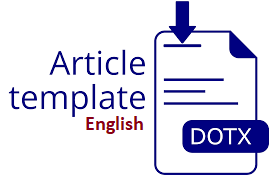Hybrid Logarithmic Percentage Change-Driven Objective Weighting and MOORA in Salesperson Performance Assessment
DOI:
https://doi.org/10.30865/klik.v5i1.1890Keywords:
Hybrid; LOPCOW; MOORA; Performance; SalespersonAbstract
A salesperson is an individual who is responsible for selling a company's products or services to customers, either directly or through various marketing channels. The main problem in determining the best salesperson is often related to the complexity of assessing various aspects of performance comprehensively and fairly. While metrics such as sales volume are easy to measure, other important aspects such as the ability to build long-term relationships with customers, customer satisfaction, and contribution to team dynamics are more difficult to measure objectively. The purpose of this study was to combine LOPCOW and MOORA in the performance appraisal of salespeople. This study aims to address several challenges associated with the assessment of sales force performance, including heteroscedasticity in sales data and complexity in evaluating relevant multi-criteria criteria. By integrating LOPCOW to manage heteroscedasticity in sales data and MOORA to consider various aspects of sales force performance, resulting in a weighting method that can provide more accurate and comprehensive performance appraisals. The results of the salesperson performance ranking the 1st rank with the final value of MOORA 0.35861 with the name Salesperson HS, the 2nd rank with the final value of MOORA 0.34241 with the name Salesperson FT, and the 3rd rank with the final value of MOORA 0.3347 with the name Salesperson TS.
Downloads
References
J. M. Lawrence, L. K. Scheer, A. T. Crecelius, and S. K. Lam, “Salesperson dual agency in price negotiations,” J. Mark., vol. 85, no. 2, pp. 89–109, 2021, doi: 10.1177/00222429209746.
P. D. Kerr and J. Marcos-Cuevas, “The interplay between objective and subjective measures of salesperson performance: towards an integrated approach,” J. Pers. Sell. Sales Manag., vol. 42, no. 3, pp. 225–242, Jul. 2022, doi: 10.1080/08853134.2022.2044344.
D. Teši?, M. Radovanovi?, D. Božani?, D. Pamucar, A. Mili?, and A. Puška, “Modification of the DIBR and MABAC Methods by Applying Rough Numbers and Its Application in Making Decisions,” Information, vol. 13, no. 8, p. 353, Jul. 2022, doi: 10.3390/info13080353.
H. Sulistiani, Setiawansyah, P. Palupiningsih, F. Hamidy, P. L. Sari, and Y. Khairunnisa, “Employee Performance Evaluation Using Multi-Attribute Utility Theory (MAUT) with PIPRECIA-S Weighting: A Case Study in Education Institution,” in 2023 International Conference on Informatics, Multimedia, Cyber and Informations System (ICIMCIS), 2023, pp. 369–373. doi: 10.1109/ICIMCIS60089.2023.10349017.
Setiawansyah, A. A. Aldino, P. Palupiningsih, G. F. Laxmi, E. D. Mega, and I. Septiana, “Determining Best Graduates Using TOPSIS with Surrogate Weighting Procedures Approach,” in 2023 International Conference on Networking, Electrical Engineering, Computer Science, and Technology (IConNECT), 2023, pp. 60–64. doi: 10.1109/IConNECT56593.2023.10327119.
M. C. S. Irawan, A. Purnomo, A. N. Sanjaya, Meiryani, S. Ubud, and F. I. Maulana, “Global Patent Landscape of Decision Support System in The Business: An Overview,” in 2023 International Conference on Information Management and Technology (ICIMTech), Aug. 2023, pp. 464–469. doi: 10.1109/ICIMTech59029.2023.10277829.
S. H. Musti, D. Irmayani, and G. J. Yanris, “Analysis Of The Electre Method In Decision Support Systems For Determining Areas Of Expertise For Informatics Management Study Program Students,” INFOKUM, vol. 9, no. 2, June, pp. 184–190, 2021, doi: 10.58471/infokum.v9i02.103.
R. Torres-Sanchez, H. Navarro-Hellin, A. Guillamon-Frutos, R. San-Segundo, M. C. Ruiz-Abellón, and R. Domingo-Miguel, “A decision support system for irrigation management: Analysis and implementation of different learning techniques,” Water, vol. 12, no. 2, p. 548, 2020, doi: https://doi.org/10.3390/w12020548.
S. Chakraborty, H. N. Datta, K. Kalita, and S. Chakraborty, “A narrative review of multi-objective optimization on the basis of ratio analysis (MOORA) method in decision making,” OPSEARCH, pp. 1–44, 2023, doi: 10.1007/s12597-023-00676-7.
A. T. Hidayat, N. K. Daulay, and M. Mesran, “Penerapan Metode Multi-Objective Optimization on The Basis of Ratio Analysis (MOORA) dalam Pemilihan Wiraniaga Terbaik,” J. Comput. Syst. Informatics, vol. 1, no. 4, pp. 367–372, 2020, doi: 10.47065/josyc.v1i4.444.
P. Karande and S. Chakraborty, “Application of multi-objective optimization on the basis of ratio analysis (MOORA) method for materials selection,” Mater. Des., vol. 37, pp. 317–324, May 2012, doi: 10.1016/j.matdes.2012.01.013.
T. Van Dua, D. Van Duc, N. C. Bao, and D. D. Trung, “Integration of objective weighting methods for criteria and MCDM methods: application in material selection,” EUREKA Phys. Eng., no. 2, pp. 131–148, Mar. 2024, doi: 10.21303/2461-4262.2024.003171.
S. Setiawansyah and A. Sulistiyawati, “Penerapan Metode Logarithmic Percentage Change-Driven Objective Weighting dan Multi-Attribute Utility Theory dalam Penerimaan Guru Bahasa Inggris,” J. Artif. Intell. Technol. Inf., vol. 2, no. 2, pp. 62–75, 2024, doi: 10.58602/jaiti.v2i2.119.
S. Dhruva, R. Krishankumar, E. K. Zavadskas, K. S. Ravichandran, and A. H. Gandomi, “Selection of Suitable Cloud Vendors for Health Centre: A Personalized Decision Framework with Fermatean Fuzzy Set, LOPCOW, and CoCoSo,” Informatica, vol. 35, no. 1, pp. 65–98, Nov. 2024, doi: 10.15388/23-INFOR537.
Arjun Nainggolan, Annisa Siregar, and M. Mesran, “Sistem Pendukung Keputusan Penilaian Indeks Kinerja Sales Marketing Menerapkan Metode MOORA,” Hello World J. Ilmu Komput., vol. 1, no. 3, pp. 121–129, Oct. 2022, doi: 10.56211/helloworld.v1i3.125.
R. Yuni Simanullang and I. Susilawati, “Seleksi Penerimaan Sales Marketing Dengan Menggunakan Pendekatan Metode Weighted Product Dalam Sistem Pendukung Keputusan,” JIKTEKS J. Ilmu Komput. dan Teknol. Inf., vol. 1, no. 3 SE-Ilmu Komputer, pp. 1–7, Aug. 2023, [Online]. Available: https://jurnal.faatuatua.com/index.php/JIKTEKS/article/view/12
P. Citra, I. W. Sriyasa, and H. B. Santoso, “Sistem Pendukung Keputusan Penentuan Kinerja Sales Terbaik Menggunakan Kombinasi Grey Relational Analysis dan Pembobotan Rank Sum,” J. Ilm. Comput. Sci., vol. 2, no. 2, pp. 99–108, Jan. 2024, doi: 10.58602/jics.v2i2.26.
F. A. Fadillah, D. L. Rahmah, and D. Marlina, “Sistem Pemilihan Sales Terbaik dengan Metode Topsis di PT Dahua Vision Technology Indonesia,” JRKT (Jurnal Rekayasa Komputasi Ter., vol. 3, no. 04, pp. 171–178, Dec. 2023, doi: 10.30998/jrkt.v3i04.9116.
W. K. Murti, A. Triayudi, and M. Mesran, “Penentuan Mahasiswa Berprestasi dengan Menerapkan Metode Multi Attribute Utility Theory (MAUT),” J. Sist. Komput. dan Inform., vol. 5, no. 1, p. 122, Sep. 2023, doi: 10.30865/json.v5i1.6823.
M. W. Arshad, S. Setiawansyah, and S. Sintaro, “Comparative Analysis of the Combination of MOORA and GRA with PIPRECIA Weighting in the Selection of Warehouse Heads,” BEES Bull. Electr. Electron. Eng., vol. 4, no. 3, pp. 112–122, Mar. 2024, doi: 10.47065/bees.v4i3.4922.
D. Darwis, H. Sulistiani, D. A. Megawaty, S. Setiawansyah, and I. Agustina, “Implementation of EDAS Method in the Selection of the Best Students with ROC Weighting,” Komputasi J. Ilm. Ilmu Komput. dan Mat., vol. 20, no. 2, pp. 112–125, 2023, doi: 10.33751/komputasi.v20i2.7904.
Bila bermanfaat silahkan share artikel ini
Berikan Komentar Anda terhadap artikel Hybrid Logarithmic Percentage Change-Driven Objective Weighting and MOORA in Salesperson Performance Assessment
ARTICLE HISTORY
Issue
Section
Copyright (c) 2024 M. Kasyif Gufran Umar, Muhdar Abdurahman, Agung Deni Wahyudi, A. Ferico Octaviansyah Pasaribu

This work is licensed under a Creative Commons Attribution 4.0 International License.
Authors who publish with this journal agree to the following terms:
- Authors retain copyright and grant the journal right of first publication with the work simultaneously licensed under Creative Commons Attribution 4.0 International License that allows others to share the work with an acknowledgment of the work's authorship and initial publication in this journal.
- Authors are able to enter into separate, additional contractual arrangements for the non-exclusive distribution of the journal's published version of the work (e.g., post it to an institutional repository or publish it in a book), with an acknowledgment of its initial publication in this journal.
- Authors are permitted and encouraged to post their work online (e.g., in institutional repositories or on their website) prior to and during the submission process, as it can lead to productive exchanges, as well as earlier and greater citation of published work (Refer to The Effect of Open Access).
















